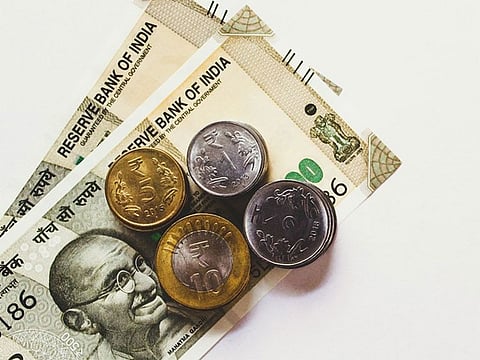Watch: Time to remit for UAE expats? Indian Rupee, Pakistani Rupee, Philippine Peso values to drop
In August, India Rupee to close at 21.4, Pakistan Rupee at 43.8, Philippine Peso at 13.6

Dubai: Remittances from the UAE are seeing a surge as several, particularly South Asian currencies, were losing ground and recorded remittance-beneficial rates in the past days. But will currency trend continue? Estimates show Indian Rupee, Pakistani Rupee, Philippine Peso currencies will drop will even further in the weeks to come.
Will currency back home rise or fall?
When it comes to sending money back home, it is vital to know whether it is currently an ideal time to remit. To understand whether it is or isn’t, one should first find out if your currency back home is expected to rise or fall in the days to come.
Here is an analysis of how the aforementioned currencies have been performing and expected to perform in the coming weeks and month, to help understand whether remitting money now is profitable or cost-effective, or should you wait it out for a few weeks for a better rate to come along.
Indian Rupee value to plunge at end of July and August
With the Indian rupee (INR) currently at 20.36 to the UAE dirham, the Indian rupee last weakened to 74.70 against the US dollar.
According to research, the Indian rupee is expected to drop to Rs21.37 by the end of next month against the UAE dirham, but the value of the Indian currency is going to steadily decline in the coming days.
So it is financially prudent to remit next month, as you will get more Indian Rupees for your UAE dirham’s worth, versus end of July. These month end low rates are seen persisting in July, declining to Rs20.89, before dropping further to 21.37 in August, latest estimates revealed.
Current analysis show rates will stay between Rs20.25-Rs21.4 during the rest of 2021, indicating September will be the most cost-effective time to remit, when compared to the remainder of the year. As of now, the end of this year and the start of next year, rates are expected to stay remittance-beneficial.
Pakistani Rupee seen soaring in the coming weeks after briefly dipping
In Pakistan, the buying rate of the US dollar was currently 159.09 Pakistani rupee (43.31 versus UAE dirham).
According to research, the Pakistani rupee is expected to dip to Rs42.7 mid-July, from the current Rs43.3 against the UAE dirham, before spiking to Dh43 during the last weeks of July. Rates will further rise to Rs43.6 just days later, in the first week of August.
During the last weeks of August, the Pakistani Rupee will mostly average between 43.26 and 44.58, making it an ideal and the most profitable and cost-effective time to remit.
Where is the Philippine Peso headed in the weeks to come?
According to research, the Philippine Peso is expected to rise to 13.8 against the UAE dirham over the next 30 days – making it ideal to send money over the next coming weeks.
The rates are expected to rise in the months of August and September as well, to 14.26 and 14.6 respectively, and the Philippine Peso will drop slightly in the months after that.
The average exchange rate against the UAE dirham in July will be 13.84, with the currency rising 4.1 per cent in the month. Over the month of August, rates are expected to soar 7.3 per cent, with the exchange rate averaging at 14.26. In September, rates are currently expected to spike to 14.6, a rise of 9.9 per cent.
However, as rates are expected to drop during the following months of October, November and December this year, it would be cost-effective to remit during the preceding months. The Philippine Peso, which is currently 13.52 against the UAE dirham, dropped 1 per cent during the last quarter.
What are the factors triggering these currency movements?
The value of a country's currency is linked with its economic conditions and policies.
The value of a currency generally depends on factors that affect the economy such as imports and exports, inflation, employment, interest rates, growth rate, trade deficit, performance of equity markets, foreign exchange reserves, macroeconomic policies, foreign investment inflows, banking capital, commodity prices and geopolitical conditions.
Looking ahead the currencies are likely to remain under pressure on rising crude prices and relative strength of the US dollar in the forex markets. The decline against the dirham is a reflection of the decline of the currencies' fall against the US dollar on which the UAE currency is pegged.
Current weakness is largely linked to the delay in OPEC’s decision on oil supplies. Oil jumped more than 10 per cent last month with the summer driving season boosting demand for US crude and gasoline. The OPEC and its allies have thus far taken a gradual approach to increasing supplies.
The world's third-biggest oil consumer, India, is concerned about domestic price pressures, with the nation expecting fuel consumption to return to pre-pandemic levels by the end of this year.
Looking at the potential surge in dollar demand in months ahead, South Asian currencies could experience further downward pressure in the months ahead.
Sign up for the Daily Briefing
Get the latest news and updates straight to your inbox









